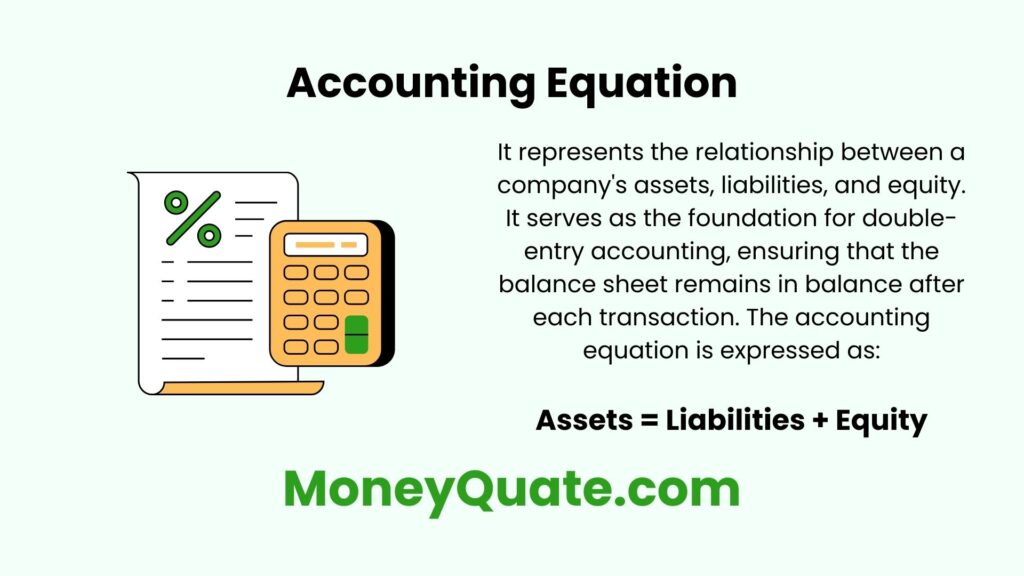Ever wondered how businesses keep track of their financial health? It all boils down to a powerful equation – the accounting equation.
Think of it as the secret sauce that ensures everything balances out!
As accountants, we rely on this equation to create a snapshot of a company’s financial position at a specific point in time. Let’s break it down and see how it works:
Contents
The Accounting Equation Explained
The basic accounting equation is pretty straightforward:
Assets = Liabilities + Owner’s Equity
Here’s a quick breakdown of each term:
- Assets: These are the valuable things a company owns, like cash, inventory, equipment, and buildings. Imagine them as all the ingredients a bakery needs to operate.
- Liabilities: These are the company’s debts – the money they owe to others, like loans from banks or money owed to suppliers. Think of them as the bakery’s outstanding bills.
- Owner’s Equity: This represents the owner’s investment in the business. In simpler terms, it’s the money the owner put into the business, plus any profits that haven’t been withdrawn. Imagine it as the initial investment the bakery owner made to get things started, plus any profits they haven’t taken out for themselves yet.

Why It Matters?
The accounting equation ensures that everything balances out. Here’s the logic:
- Think of it as a Scale: The left side (Assets) represents the total value of everything the company owns. The right side (Liabilities + Owner’s Equity) represents how that value is financed – either through debt (Liabilities) or the owner’s investment (Owner’s Equity). The scale needs to be balanced for the equation to hold true.
- Always in Balance: Imagine the bakery owner starts with $10,000 in cash (Asset) and uses it to buy flour, sugar, and ovens (also Assets). The equation stays balanced because the owner’s investment (Owner’s Equity) of $10,000 is now reflected in the new assets.
Let’s see the accounting equation in action
- Example 1: A lemonade stand has $20 in cash (Asset) and owes $5 to a supplier for lemons (Liability). The owner also invested $15 of their own money (Owner’s Equity). The equation holds true: $20 Assets = $5 Liabilities + $15 Owner’s Equity.
- Example 2: A company starts with $100,000 in cash (Asset) and takes out a loan of $50,000 (Liability) to buy equipment (another Asset). The owner’s initial investment remains at $50,000 (Owner’s Equity). The equation remains balanced: $150,000 Assets = $50,000 Liabilities + $50,000 Owner’s Equity.
The Takeaway
The accounting equation might seem simple, but it’s the foundation for understanding a company’s financial health.
It ensures everything balances out and gives a clear picture of where a company’s money comes from and where it goes.
So next time you hear about the accounting equation, remember – it’s the magic formula that keeps the financial house in order!